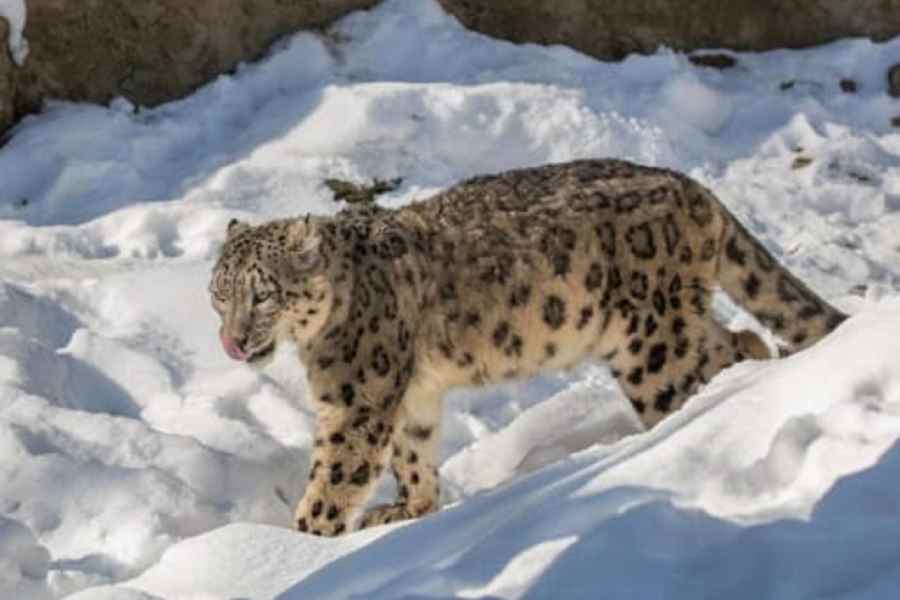India has 718 snow leopards, the Union environment ministry said on Tuesday, releasing the results of an exercise to count what some wildlife experts say are “incredibly elusive” creatures that live in remote and rugged landscapes.
The Snow Leopard Population Assessment exercise has estimated that Ladakh has the highest count of 477 snow leopards, followed by Uttarakhand (124), Himachal Pradesh (51), Arunachal Pradesh (36), Sikkim (21), and Jammu and Kashmir (9), the ministry said.
The assessment has covered over 70 per cent of the potential snow leopard range across the northern trans-Himalayan region, reaching into vast hitherto uncovered territories.
Scientists from the Wildlife Institute of India, Dehradun, the Nature Conservation Foundation, Mysore, and other institutions collaborated in the exercise, placing cameras at 1,971 locations and relying on wildlife staff and volunteers to cover over 13,000km to record signs of snow leopards.
The cameras photographed 241 unique snow leopards, but the researchers combined the images with ground-collected data to estimate a total of 718 snow leopards in the area covered by the assessment exercise.
Snow leopards’ natural habitat makes them difficult to study in the wild. Scientists at the Wildlife Institute have studied snow leopards since the 1980s but, the ministry said, only about 5 per cent of the range in select states had been covered until 2016.
The ministry said the Snow Leopard Population Assessment report has proposed a dedicated snow leopard cell at the Wildlife Institute with a focus on long-term population monitoring, well-structured studies and field surveys.
The snow leopard lives across the mountain ranges of Afghanistan, Pakistan, Bhutan, China, India, Kazakhstan, Tajikistan, Uzbekistan, Mongolia, Nepal and Russia, adapted to high-altitude habitat with powerful legs for jumping and thick fur for warmth.
A global population assessment of snow leopards published in a scientific review in 2016 had estimated that there may be between 4,678 and 8,745 snow leopards scattered across roughly three million square kilometres across these countries.
Scientists have earlier flagged what appears to be a delicate balance between snow leopard populations and the populations of their primary prey species — medium-sized high-altitude herbivores such as the bharal, ibex and marmots.
Since wild prey abundance increases in an area, it is expected that the snow leopard populations will grow too. However, more snow leopards may have a negative impact on the abundance of wild prey, especially if alternative prey is not available.
Ultimately, the decline in wild prey caused by snow leopards could lead to a reduction in snow leopard abundance itself, Charudutt Mishra, a scientist specialising in snow leopards at the Nature Conservation Foundation and Sandro Lovari, an ecologist at the University of Siena, Italy, wrote in an anthology on snow leopard research in 2016.










